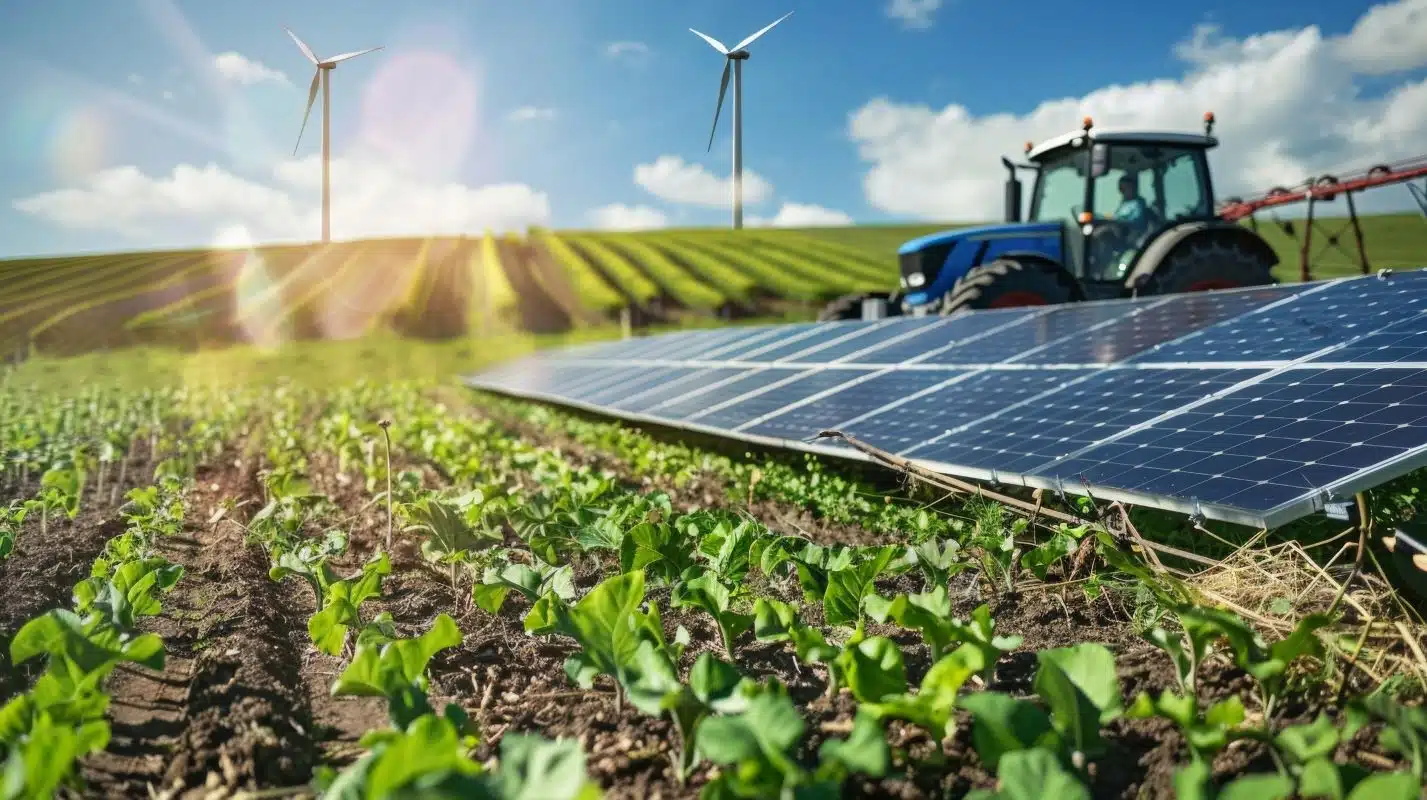American farmers reported increased interest in leasing land for solar energy production, according to the monthly magazine Purdue University/CME Group Ag Economy Barometer Table of contents. In addition, views on agricultural land values also saw a boost thanks to clean energy production at agricultural sites. This month’s Ag Economy Barometer survey was conducted May 13-17.
The index shows that interest in leasing agricultural land for solar energy production is increasing, according to recent research results. In both April and May, about 20% of respondents (compared to just 12% in March) discussed leasing agricultural land for solar energy production in the past six months. Notably, more than half (55%) of respondents were offered long-term lease rates of $1,000 per acre or more, while 27% received offers of more than $1,250 per acre. Combining data from both April and May surveys, approximately 30% of respondents who explored leasing options have now signed solar leases for the farmland they manage.
Producer views on farmland values remained stable in May, with a small increase of 3 points in the Short-Term Farmland Value Expectations Index. Compared to last fall, producer sentiment has weakened in 2024, as evidenced by an average index of 116 from January to May, down 6% from the average of 124 in October-December 2023. Those expecting higher farmland values in the coming years point to non-farm investor demand and inflation as key drivers of their optimism. It is notable that the survey in April and May expanded the answer categories to include energy production from wind and solar installations as a reason to expect values to rise. In May, 12% of optimistic respondents cited energy production as a factor in their positive outlook, up from 8% in April.
“While the overall outlook for farmland values showed little change in May, the evolving energy production landscape is starting to play a role in producer views,” said James Mintthe barometer’s principal investigator and director of Purdue University Center for Commercial Agriculture. “We are seeing a shift in how alternative income sources are influencing farmland value expectations.”
Additionally, interest among ethanol plants in developing carbon dioxide capture and storage (CCS) projects is increasing, driven in part by tax breaks in the Inflation Reduction Act. This month’s survey asked about farmers’ experiences with potential ethanol plant CCS projects. Seven percent indicate that they have been approached for such projects. Per-acre payment rates ranged from less than $26 to more than $50, showing significant variation. Future studies will delve deeper into the specifics of CCS projects.
The overall outlook for U.S. farmers rose in May as the Purdue University/CME Group Ag Economy Barometer index rose to 108, up 9 points from April. Both sub-indices of the barometer showed an increase, with the Index of Future Expectations rising 11 points to 117 and the Current Conditions Index rising 6 points. The rise in crop prices played a role in boosting farmer confidence this month. By mid-May, cash corn prices in the Eastern Corn Belt had risen 6% to 7%, and soybean prices had risen 2% to 3% since the April survey. The price improvement was in line with the good progress of corn and soybean plantings, which likely contributed to the improvement in sentiment.
“The increase in the Index of Future Expectations reflects farmers’ expectations that conditions will improve, although it is clear that the financial challenges of 2024 are still concerning,” Mintert said.
The Farm Financial Performance Index rose to 82 in May, an increase of 6 points compared to April. This index, which asks producers to compare their company’s expected financial performance with last year, shows some improvement. However, despite the gains, the index remains 15 points lower than at the end of last year. This indicates that producers still expect 2024 to be a more financially challenging year compared to 2023.
Producers’ prospects for capital investment improved modestly in May, with the Farm Capital Investment Index rising to 35, up 4 points from an all-time low of 31 in April. Despite this increase, the survey found that 77% of respondents believe it is a bad time to make major investments, while only 12% thought it is a good time. Interest rates and higher prices for agricultural machinery and new construction were the main reasons given for this cautious approach. Of those who thought it was a good time to invest, almost half (45%) cited high inventories at machinery dealers as the most important factor.
Listen to more in-depth conversations on Solar Builder’s YouTube channel

Our most popular series include:
Power forward! | A collaboration with BayWa re to discuss industrial topics at a higher level.
The buzz | Where we give our 2 cents per kWh in the residential solar market.
The pitch | Discussions with solar manufacturers about their new technology and ideas.
Source link


